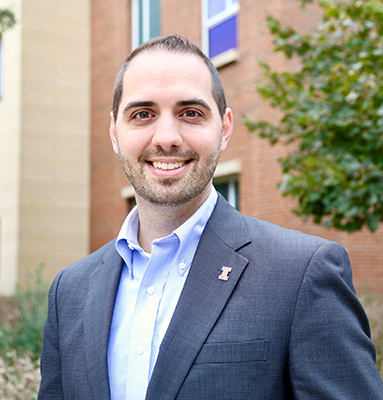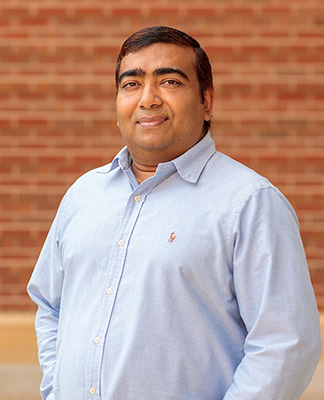
Sep 4, 2025 Accountancy Alumni Business Administration Faculty Finance Research in Education Student
Access the focus of the 2025 Midwest Healthcare Management Conference
Providing Healthcare Access to Diverse Populations was the theme for the Fifth Midwest Healthcare Management Conference held on August 22 at the I Hotel and Conference Center. The event, co-sponsored by Gies College of Business and Carle Illinois College of Medicine (CI Med), brought together clinicians, operations and finance managers, and engineers to help solve some of the most pressing issues in healthcare with multidisciplinary solutions.

The Department of Business Administration at Gies Business organized the first conference in 2019 to bring together experts in healthcare supply chains. After a two-year hiatus during the COVID-19 pandemic, the conference reemerged in 2022 and has been held for the last four consecutive years.
“When you say there is a healthcare conference run out of a business school, that strikes some people as unusual,” said David Molitor (right), associate professor of finance and director of Gies’ Health Care Research Initiative. “However, healthcare is a huge industry that encompasses 18 percent of our economy. Making healthcare delivery more effective involves addressing issues of insurance and risk, supply chains, innovation, R&D, and price-setting, all of which can be helpfully viewed through a business lens. In that sense, it is very natural that a business school is a great home for health scholars and a health conference.”
In addition to generating ideas, the conference is designed to serve as a jumping-off point for future partnerships and discussion. To ensure the knowledge shared is recorded for future scholars, each year’s conference has been gathered into a book. Impacts of COVID-19 on Supply Chains: Disruptions, Technologies, and Solutions (2022) and Lessons from the Pandemic for Healthcare Operations (2023) have already been published, while Social Healthcare Delivery with Digital Technologies (2024) is in publication.
Organizer Ujjal Mukherjee, an associate professor of business administration at Gies, notes that each conference is built upon the previous, and he evaluates the success of each event on the subsequent partnerships that develop. For instance, because of a previous year’s conference, Mukherjee is part of a team collaborating with CI Med as well as Boston University on an artificial intelligence (AI) system for early detection of dementia. He is also working with OSF Healthcare to develop a rural health kiosk, which he hopes to implement in many zip codes soon.
“We got very good data from OSF,” he said. “When we analyzed the data, we realized that there are many zip codes in Illinois where there are healthcare access deserts. We want to use this kiosk to provide access to remote communities not normally associated with healthcare.”
AI was a major topic of this year’s conference.
“How do you use AI and digital technologies to bridge the gap in healthcare access to different sections of society?” asked Mukherjee.
Susan Lu, a professor of operations management and statistics at the University of Toronto, said it begins with patients’ confidence in working with AI instead of or as a complement to a primary care provider (PCP). Mark Peecher, Executive Associate Dean of Faculty and Research at Gies, referred to it as just another example of the “rise of medical skepticism.”
Lu shared that despite AI being trained by millions of doctors’ notes, currently, only 47 percent of patients are willing to take advice from an AI doctor. That changed significantly – rising to 85 percent – however, when recommended by a peer.
Tinglong Dai, a professor of business at Johns Hopkins University, shared his research on patients’ confidence in physicians who use AI to make decisions. He said patients gave physicians who don’t use AI a rating of 6 on a 7-point scale, those who use AI to verify decisions 5 out of 7, and those who use AI to make decisions 4 out of 7.
“Attitudes toward AI are changeable,” said Rajul Gandhi, Senior Vice President of Medical Cost & Clinical Strategy at Wellvana, “As AI accuracy improves and peer acceptance increases, AI aversion can shift toward AI appreciation.”
AI is just one area that can help fill the gap of current and pending medical deserts in the United States. According to Gandhi, 48 percent of rural hospitals operate at a loss, and by 2030, the number of physicians across the country will decrease by 23 percent. He says it is not unusual for uninsured patients to use emergency rooms for primary healthcare. He shared how Wellvana is creating a system to identify and reach out to patients who are missing critical screenings because of frequent job changes.
As part of the conference, 55 student teams participated in the Dr. Bot Data Challenge. This year, the teams were asked to use a large language model for the development of a project on improving AI understanding of responses to real-world medical questions. The top teams shared their projects during lunch.

Telehealth was another topic of several presentations. Yi Tang, assistant professor of business analytics at Old Dominion University, reported that despite depression being a top cause of disability, only 47 percent of those high-risk patients get treatment. He showed how tele-mental health can reduce the stigma of going to a clinic. The challenge would be to increase the states that require insurance coverage of telehealth at the same level as in-person care.
Mukherjee (right) shared his study on “DSH (Disproportionate Share Hospital) and GPP (Global Payment Program).” In each state, GPP provides a pool of funds for the uninsured by combining federal DSH and uncompensated care funding. Mukherjee’s research suggests that hospitals in lower socio-economic areas can save 10 percent of their expenses or an average of $360 million by providing no-cost primary care coverage to all patients, thus preventing high costs of frequent emergency room visits and long hospital stays.
Marynia Kolak, assistant professor of Geography and Geographic Information Science at the University of Illinois, shared that neighborhoods account for 60 percent of the variations in premature mortality among the general population. According to Kolak, social determinants such as access to grocery stores, clinics, and parks were big factors in that variation. Other topics included creating a system to more accurately predict the length of surgeries, providing a traveling mobile unit to reach isolated patients, and how doctors using robot-assisted surgery can see more clearly because they are using a video console.
“Rural healthcare delivery and the socioeconomic disparity of healthcare are big challenges for the future,” Mukherjee concluded. “While some of the treatment and some of the solutions are there, it’s not accessible to all.”
“Gies Business is really a center of excellence in healthcare research, and this conference is a great way to showcase the facets of research coming out of Gies and our campus, and the partnerships we are developing in our local community,” Molitor said. “That part of this conference is unique and has really blossomed over time. Usually, when I go to academic conferences, I see a group of scholars who are in a very narrow area talking about the things that excite them. This is a much broader focus, and that is reflected in who attends.”
Gandhi, who earned an MBA from Gies Business in 2015, is among several attendees who are returning presenters at the conference.
On why he returns each year, Gandhi said, “At the end of the day, it’s relationships and partnerships that you develop. I learn a lot and hopefully give it back to somebody who might find it useful. You don’t get that if you don’t come.”
